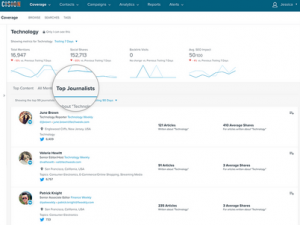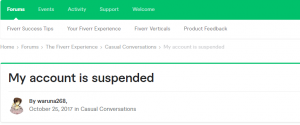— August 9, 2018
Recently, a client wanted to remove qualifying elements from their text ads on the Search Network. We had been using terms in their ad copy, such as “for corporate groups” and “for 50+ people” to help make our target audience clear.
However, the client started to feel that those qualifiers had become unnecessary. They wondered if we couldn’t make better use of that ad text space.
It’s true, we had been using those qualifiers for a long time—but for good reason. We felt that they were a critical part of turning away irrelevant ad clicks.
But the client wanted to test whether those qualifiers were still necessary, so we agreed.

And guess what? We saw a big jump in CTR, from 4.20% to 5.11%.
But our conversion rate only increased slightly, from 2.63% to 2.76%!
Why Qualifying Clicks is Important
So what’s the lesson here? It’s that qualifying prospects is an important part of good paid search management. It can have a huge impact on your conversion rates and budget costs.
But there’s another reason why qualifying clicks is so important.
I call it the “annoyance” factor.
I think we can all agree that most people don’t enjoy clicking on ads that drive them to products or services that are irrelevant to their needs. It’s annoying!
If you’re not careful, this annoyance can start to infect your brand. Not only does it annoy people when it happens, it can also mean that prospects will resist clicking on your ad next time—even if the product or service you’re offering is relevant to their needs.
Fortunately, there are many methods you can use to qualify your prospects, both pre-and post-click. I’m going to use the rest of this blog post to hit on some of the most important ones.
Pre-Click Qualifiers
Ideally, you want to qualify your prospects before they click on your ad. Here are seven ways to do it:
1. Keyword Strategy
Making sure that your search keyword strategy is airtight can go a long way to discourage irrelevant clicks.
Sometimes, clients will throw a million different keywords at us because someone, at some point in time, described their product in those terms. But really, it’s better to identify keywords that truly do reflect what you have to offer.
If you’re not sure, test out keywords in isolation to get clarity. Put your “maybe” keywords into their own campaigns and ad groups so you can see how they’re performing.
2. Negative Keywords
Negative keywords are perhaps your most powerful tool for filtering out obviously unqualified leads.
Strike pre-emptively before you set up a new account or campaign. Look at Google’s suggestions when you search for the product or services in live searches. If you find things that aren’t relevant, negate them now.
Unfortunately, not all of these negations will be obvious. Some may look relevant on the surface. But paid search managers who are well versed in the product or service can often parse out terms that miss the mark.
If you’re not sure, apply the same strategy of isolating them into their own ad groups and see how they convert.
3. Targeting Options
Targeting options are another great way to avoid irrelevant ad clicks.
For example, take location targeting. If you do business in California (and only California) target that state when you set up your campaigns. This will prevent people from New York, Texas, etc. from seeing the ad.
When a client has a mix of stronger or weaker markets (or markets they “must do business in” and markets they “would like to do business in”), we’ll use a tiered targeting system to account for these nuances.
4. Device Optimization
Device optimization is another method you can use to qualify prospects. It can be an effective way to reach a whole different set of potential customers without attracting interest from prospects who likely won’t convert.
We’ve had some really good results with this approach. So don’t be too quick to judge and omit something without understanding the full picture.
5. Ad Scheduling
Many times, scheduling takes care of itself. The flow of traffic just naturally falls off when your target audience isn’t looking for your product or service. But this isn’t always the case.
When our clients’ products or services have a tendency to attract irrelevant clicks in time periods when interest from relevant traffic is low, we’ll often set up ad schedules.
6. Ad Copy
We talked about using ad copy as a qualifying element earlier. But it’s so important, I wanted to include it here as well.
The types of ad copy qualifiers you can use is wide. They can include things like industry, amount, persona and price, for example.
Here’s an example of an ad that qualifies by price in its copy:

For a more detailed rundown of how to use ad copy qualifiers, see my blog post on expanded text ads and qualifying clicks.
7. Ad Extensions
Ad extensions go hand-in-hand with ad copy. You can use then to emphasize qualifying elements already included in the ad copy or introduce new ones.
In this example, a location extension is used to qualify prospects:

Post-Click Qualifiers
Ideally, you want to qualify prospects and turn away not-likely-to-convert traffic BEFORE they click your ad. But there’s still value in catching them even after they’ve clicked. And your best line of defense are landing pages.
8. Landing Pages
Once an unqualified visitor reaches your landing page, they’ve already clicked and cost you money, sadly. But you can still discourage them from completing actions you want only qualified prospects to take.
With the added copy space a landing page provides, you can describe more fully the product or service you have on offer, which can again serve to catch/discourage prospects that aren’t a good fit.
Additionally, by asking smart questions on your landing page, you can funnel leads to the right salesperson or department to market to them more efficiently. This is especially useful if you have two or more tiers of business offerings or different types of programs.
Qualify Your Prospects to Save Money and Protect Your Brand
As you can see, there are many ways you can qualify your prospects before (or even after) they click on your ad.
Putting these qualifiers in place will go a long way to improve your conversion rates, save your PPC budget and protect your brand from being perceived as an “annoyance.”
Keep in mind, however, that is by no means an exhaustive list! I encourage you to test and continue to try new methods of qualifying prospects.
Digital & Social Articles on Business 2 Community
(29)






